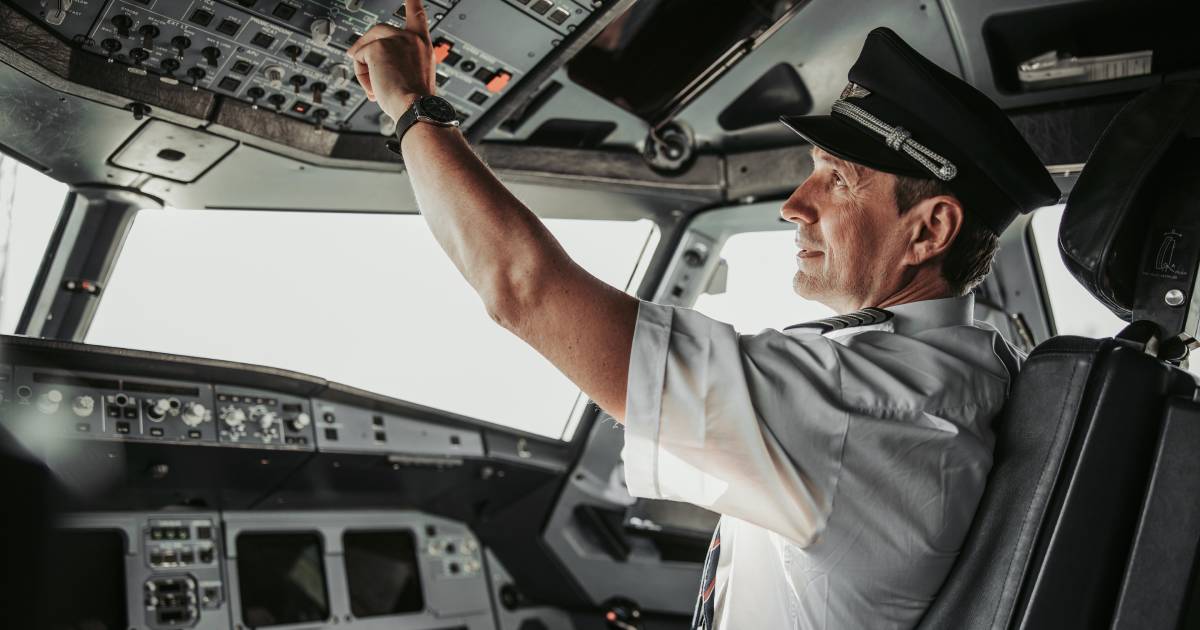
When it comes to the world of aviation, pilots are the unsung heroes who navigate through the skies with precision and expertise. They commandeer massive aircraft, guiding them safely across continents and through turbulent weather conditions. But the role of a pilot goes far beyond just flying an airplane. They are responsible for the lives of hundreds of passengers, making split-second decisions and managing complex systems in order to ensure a smooth journey. In this article, we will explore 12 astounding facts about pilots that highlight their skills, dedication, and the fascinating world they inhabit. So fasten your seatbelts, because we’re about to take off on a journey to discover the incredible world of pilots.
Key Takeaways:
- Pilots undergo rigorous training to handle emergencies, navigate challenging weather, and prioritize safety, showing their passion for flying and dedication to their profession.
- Pilot fatigue, strict regulations, and recurrent training ensure pilots are well-prepared, physically fit, and committed to safe and professional flying.
Pilots undergo rigorous training before they can fly a plane.
Being a pilot is no easy feat. Pilots go through extensive and intensive training programs to ensure they have the necessary skills and knowledge to safely operate an aircraft. From mastering aviation theory to practicing flight maneuvers, their training is both mentally and physically challenging.
Pilot fatigue is a major concern in the aviation industry.
Due to long working hours and irregular schedules, pilot fatigue is a significant issue that can affect their performance and decision-making abilities. To address this concern, strict regulations are in place to monitor and manage the rest periods and duty hours of pilots, ensuring they are well-rested and alert while operating an aircraft.
Pilots are highly skilled in navigating through challenging weather conditions.
One of the remarkable abilities of pilots is their expertise in handling adverse weather conditions. They receive extensive training in aviation meteorology and have access to advanced weather forecasting tools, allowing them to make informed decisions and ensure the safety of their passengers and crew.
Pilots are trained to handle emergency situations with calm and precision.
During their training, pilots undergo rigorous simulations and exercises to prepare them for emergency scenarios. From engine failures to cabin decompression, they are trained to stay calm, follow procedures, and make critical decisions under pressure to ensure the safety of everyone on board.
Pilots communicate with air traffic controllers using standardized aviation phraseology.
To ensure clear and effective communication, pilots use a standardized set of phrases and terminology when interacting with air traffic controllers. This helps to minimize misunderstandings and ensures everyone involved understands the instructions and information being exchanged.
Commercial pilots undergo regular medical examinations to assess their fitness to fly.
Pilots must meet specific medical requirements to ensure they are physically and mentally fit to operate an aircraft. They undergo regular medical examinations to assess their overall health, vision, hearing, and any conditions that could affect their ability to perform their duties safely.
Pilots are trained to prioritize passenger and crew safety above all else.
Ensuring the safety and well-being of passengers and crew members is the primary responsibility of every pilot. They are trained to prioritize safety in all aspects of their work, from pre-flight checks to emergency procedures, ensuring that every flight is conducted with the utmost care and professionalism.
Pilots must undergo recurrent training and assessments to maintain their flying privileges.
Even after obtaining their licenses, pilots are required to undergo recurrent training and assessments to stay current with the latest regulations and procedures. This ongoing training ensures that they maintain their flying privileges and continue to operate aircraft safely.
Pilots rely on sophisticated navigation systems to guide them during flights.
Modern aircraft are equipped with advanced navigation systems, such as GPS (Global Positioning System) and inertial navigation systems, which assist pilots in determining their position, tracking their flight path, and navigating accurately from one point to another.
Pilots often have to make quick decisions in dynamic and changing flight scenarios.
Flight conditions can change rapidly, requiring pilots to make swift decisions based on the information available to them. Their training equips them with the ability to assess situations quickly, evaluate the available options, and make informed decisions to ensure the safety of the aircraft and its occupants.
Pilots must adhere to strict regulations and guidelines set by aviation authorities.
To maintain consistency and safety in the aviation industry, pilots must follow strict regulations and guidelines set by aviation authorities. They are responsible for conducting themselves in a professional manner and adhering to all established protocols and procedures.
Pilots often have a deep love for aviation and a passion for flying.
Many pilots develop a deep love for aviation from a young age and pursue their dreams of flying. They have a passion for the skies and a genuine enthusiasm for their profession, which is evident in their dedication and commitment to their craft.
Conclusion
Pilots are truly remarkable individuals who play a vital role in the aviation industry. From their rigorous training and expert knowledge to their impeccable flying skills, pilots are equipped with the ability to handle complex situations and ensure a safe travel experience for passengers. The 12 astounding facts about pilots mentioned in this article shed light on the incredible responsibilities and achievements of these aviation professionals. Whether it’s their commitment to safety, their extraordinary navigational skills, or their ability to handle pressure and make split-second decisions, pilots deserve our utmost respect and admiration. So the next time you embark on a flight, take a moment to appreciate the pilots who are dedicated to safeguarding your journey through the skies.
FAQs
1. How long does it take to become a pilot?
It typically takes several years to become a pilot. The training process includes acquiring a private pilot’s license, instrument rating, commercial pilot’s license, and finally, an airline transport pilot’s license.
2. What are the educational requirements to become a pilot?
To become a pilot, one must have at least a high school diploma or equivalent. However, many aspiring pilots also pursue a bachelor’s degree in aviation or a related field.
3. Do pilots undergo regular health checks?
Yes, pilots are required to undergo regular health checks to ensure they are fit to fly. These medical examinations assess physical fitness, mental health, and overall well-being.
4. What are some challenges that pilots face?
Pilots face various challenges in their line of work, including adverse weather conditions, long hours of flying, time zone changes, and handling emergency situations such as mechanical failures or medical emergencies.
5. How do pilots maintain their skills?
Pilots are required to undergo regular training and simulation exercises to maintain their skills and stay updated with the latest aviation technology and safety procedures.
6. Can pilots fly different types of aircraft?
Many pilots are trained to fly multiple types of aircraft, ranging from small general aviation planes to large commercial airliners. However, additional training and certification may be required for different aircraft models.
7. Do pilots have specific routes or destinations?
Pilots do not have specific routes or destinations. They follow flight plans provided by air traffic control and are responsible for flying the aircraft in accordance with these plans.
8. Are pilots in demand?
Yes, there is a high demand for pilots, especially in the commercial aviation industry. With the increasing number of airlines and the retirement of current pilots, the demand for new pilots is expected to continue growing.
9. How do pilots communicate with air traffic control?
Pilots communicate with air traffic control through radio transmissions. They follow specific phraseology and procedures to ensure clear and efficient communication while in the air.
10. Can pilots fly solo?
Yes, pilots can fly solo once they have obtained their private pilot’s license. However, for commercial or airline operations, a minimum of two pilots is required.
Pilots possess an array of remarkable skills and experiences that make them true masters of the skies. From their rigorous training to their ability to handle emergency situations with precision, pilots never cease to amaze us. If you're curious to learn more about the world of aviation, consider exploring the thrilling realm of canopy piloting championships, where pilots showcase their incredible aerial prowess. For those interested in becoming a pilot, delving into the fascinating world of aviation training at flying schools can provide valuable insights. And if you're intrigued by the rapidly growing field of unmanned aerial vehicles, discovering the captivating facts about drone piloting is sure to pique your interest.
Was this page helpful?
Our commitment to delivering trustworthy and engaging content is at the heart of what we do. Each fact on our site is contributed by real users like you, bringing a wealth of diverse insights and information. To ensure the highest standards of accuracy and reliability, our dedicated editors meticulously review each submission. This process guarantees that the facts we share are not only fascinating but also credible. Trust in our commitment to quality and authenticity as you explore and learn with us.


